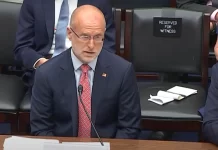The June retail sales report, released today, shows a rapid increase in spending, but not quite as strong as inflation. Real spending is down slightly. The rapid pace of retail spending means inflationary pressures will remain strong. Interest rates are heading higher.
The Week That Was
Today’s report shows June retail sales rose at a strong 13 percent annualized increase for the month. Second quarter sales were up at a 9 percent annual rate from the first quarter. With inflation at an 11 percent rate for the quarter, real spending was down.
The rapid increase in retail sales combined with rapid inflation indicates interest rates are heading higher.
Wednesday’s report on consumer prices revealed a 1.3 percent monthly increase in all prices. This is a 17 percent annual rate for the month and brings the year-over-year rate to 9 percent. Core inflation (ex-food and energy) was up at a 9 percent annual rate for the month, 6 percent over the past year.
Kudos to my friend and associate Gary Meyers: almost a year ago he predicted the inflation rate would reach 15 percent or higher. He was correct. While I believe inflation has begun to moderate, Gary expects it to remain close to current levels.
The upward drift in initial weekly unemployment claims continued into the week ending July 9. Initial unemployment claims for the past two weeks averaged close to 240,000. Claims have risen each month since hitting a low of 175,000 in March.
Things to Come
On Monday, the Homebuilders’ survey will provide the first read on new housing activity in early July. Last month’s report registered a 67. This is down from the low 80s at the beginning of the year, but still comfortably above break-even (50). Expect a further decline to the mid-60s or lower.
The Homebuilders’ survey provides the most up-to-date data on new housing activity. It tends to be more informative than the rest of the housing data, which are for June.
Money, Money, Money
Our monetary analysis indicates there was an increase in the money supply in June. Nonetheless, financial markets are behaving as if monetary policy has already turned restrictive.
Neither the money supply nor the spread between short- and longer-term interest rates points to monetary restraint. However, exceptionally sharp increases in short-term rates can lead to monetary restraint. By signaling its future moves, the Fed may accelerate the market’s reaction.
Either way, it appears we are heading for a more restrictive monetary policy in the months ahead. This is not a favorable environment for stocks.
Market Forces
The market has been about as erratic as my golf scores. Stocks followed last week’s 2 percent to 5 percent gains with weekly losses of 2 percent to 4 percent.
Economic news was dominated by the report of inflation being much higher than expected. The yield on two-year T-Notes rose to slightly above 3 percent, putting them above the yield on the 10-year Note.
An inverted yield in this range indicates financial markets expect the Fed to succeed in eventually lowering inflation. Financial markets also expect the Fed to raise its fed funds target to 4 percent or 4.25 percent by year’s end. In other words, financial markets assume short-term interest rates will have to move this high, this quickly, to contain inflation.
Neither the Fed nor anyone knows how far interest rates will have to rise or how much securities the Fed should sell to regain control of spending and inflation.
Outlook
Economic Fundamentals: weak
Stock Valuation: S&P 500 overvalued by 22 percent
Monetary Policy: shifting to restraint
For more from Robert Genetski.
More on inflation and unemployment.
For more Budget & Tax News articles.
For more from The Heartland Institute.










